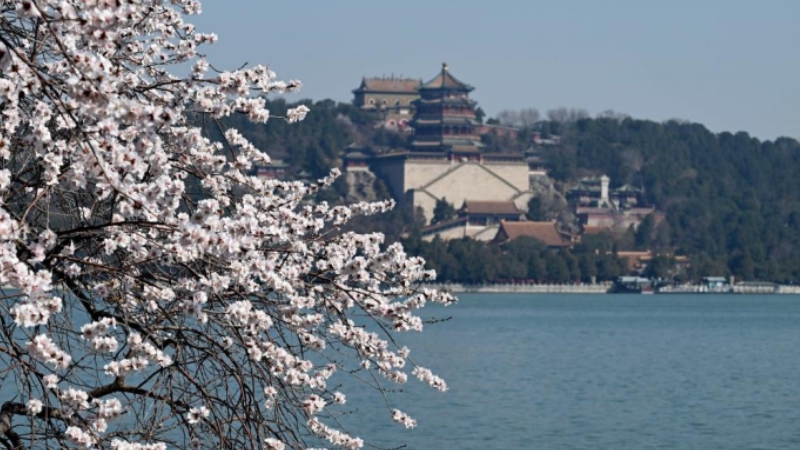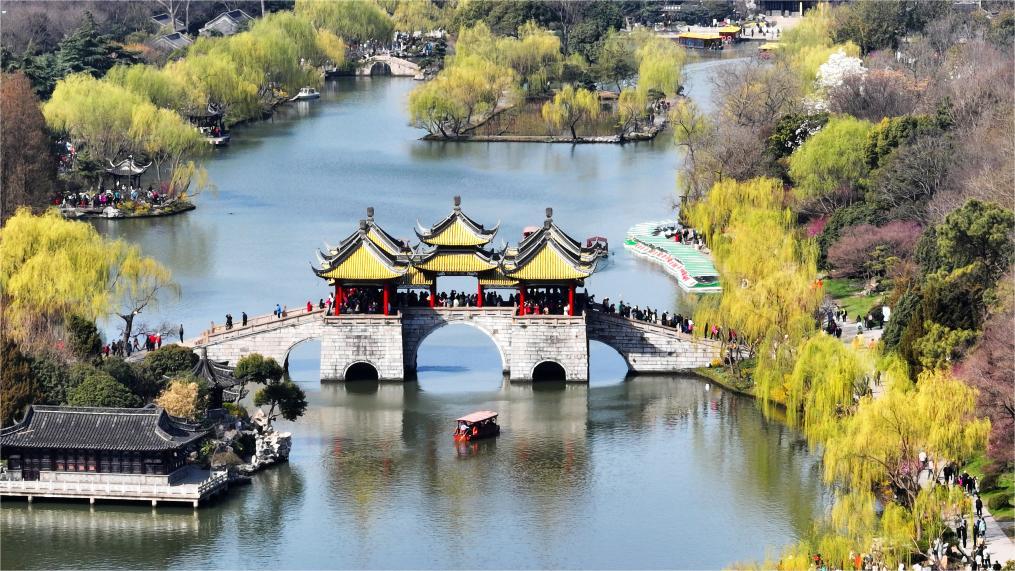From barren to blossoming, cherry plantation transforms remote SW China village
GUIYANG, March 24 (Xinhua) -- Every spring, Taoying Village, nestled in Wumeng Mountain in southwest China's Guizhou Province, springs into life as large swaths of cherry trees reach their peak bloom, drawing throngs of visitors.
Taoying is situated in the heart of the cultivation zone for the "Agate Red" cherry variety, located in the Shedongguan Yi, Miao and Bai Township of Nayong County, Bijie City. Over the years, these cherries have evolved into a symbol of the village's identity.
Thanks to afforestation efforts spanning the past two decades, the remote landlocked village has transformed its once-barren mountains, plagued by rocky desertification, into picturesque areas adorned with cherry trees, benefiting the villagers financially.
The forest coverage rate in Taoying has increased from 17.5 percent in the past to 83.6 percent today. The cherry planting area in the village exceeds 4,800 mu (about 320 hectares), and the annual income from selling fresh cherry fruits totals more than 28 million yuan (about 3.94 million U.S. dollars), according to Xiao Jun, head of the village committee of Taoying.
The "flower economy" here generates additional income for the locals. The village attracts visitors from across the nation during the spring and summer seasons, drawn by the blossoming cherry trees and the fun of cherry picking.
Thanks to the thriving activities, the residents of Taoying have achieved an annual per capita disposable income of over 26,000 yuan.
With a focus on the "flower economy," the village is striving to explore more ways to unlock the value of ecological products. Since the beginning of last year, the village has actively promoted the integration of agriculture and tourism through measures like building tent hotels and running sightseeing trains in the cherry forest.
Meanwhile, the green growth centering on the cherry industry salvaged the village from environmental degradation.
During the 1960s and 1970s, villagers were engaged in burning kilns and producing bricks and tiles to augment household income. While such activities provided a financial boost compared to farming, the extraction of mud and deforestation inflicted significant damage on the local environment.
"At the peak, there were about 60 or 70 kilns in the village. Mud excavation and brick production not only led to soil and water erosion but also polluted the air," Xiao said.
With support from agricultural experts, local villagers began to plant trees on a large scale and vigorously developed the cherry industry.
According to Luo Hongxiang, deputy director of Guizhou's provincial department of ecology and environment, Guizhou has been striving to harness the value of ecological products and promoting green and low-carbon development to turn ecological resources into wealth.
Photos
Related Stories
Copyright © 2024 People's Daily Online. All Rights Reserved.









